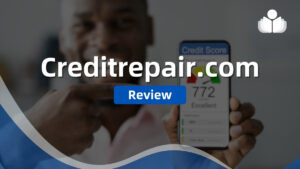1. Who Are Your Planned Gift Prospects? – Part I
by John Elbare, CFP
Before you get started with planned giving, you need to identify your most likely planned gift prospects.
Planned giving works best when you target your efforts toward a segment of donors who are most inclined to consider a planned gift.
Avoid falling for the common misperception that planned giving is mostly for wealthy donors. Nothing could be further from the truth. Sure, wealthy people do set up planned gifts for their favorite charities … but so do your average middle class donors. In fact, most of your planned gifts – once they start coming in – will be from your regular, average donors.
This is the real beauty of planned giving – it allows your everyday annual donors to become major gift donors, even though they are not wealthy. Here’s how it works. Most middle class donors can only give so much each year, depending on their disposable income. This may be $100 or $1000.
When your donors think about their annual gift, they almost always think about what they have in their checking account. This limits their giving. They think about their budget and what they can comfortably afford.
However, as they save for retirement and accumulate more and more assets, they may very well end up in a position to leave a large gift at the end of life. End-of-life gifts, or planned gifts, are generally made from a donor’s assets – their investment account, bank account, retirement account, the family home, or a vacation home.
This is why planned gifts tend to be much larger than a lifetime gifts. For many donors who leave a planned gift, that one single planned gift may be much larger than all of their cumulative lifetime giving. The national average for planned gifts is about $50,000, which is a true major gift for just about every nonprofit.
=-=-=-=-=-=-=-=-=-=-=-=-=-=
See Part II of “Who Are Your Planned Gift Prospects?” on May 28
=-=-=-=-=-=-=-=-=-=-=-=-=-=
John Elbare, CFP, has spent the last 30 years helping non-profits raise more money
through large, planned gifts. He shows them how to add an effective planned giving
strategy to their current fund raising effort without a lot of extra expense or staff.
You can contact him at John Elbare, CFP.
=-=-=-=-=-=-=-=-=-=-=-=-=-=
Have you seen
The Fundraising Series of ebooks?
They’re easy to read, to the point, and inexpensive ($1.99 – $4.99)
=-=-=-=-=-=-=-=-=-=-=-=-=-=
2. Events In Private Homes: Part III – Solicitation
by Hank Lewis
(Continued from Last Wednesday)
Solicitation at a home event, asking attendees to write a check, depends on whether or not this is a first-time meeting for this group of attendees.
If these folks have met before, and have discussed the organization’s needs and their role in helping to satisfy those needs, then they are expecting to be Asked … and probably for a specific dollar figure.
If this is an initial solicitation, following an introduction to the organization and its mission, then it’s not realistic to ask everyone to make a gift of a specific amount. What you’re likely to get in that initial Ask is “go-away money.” Those people who actually write checks will only give amounts that they consider sufficient to meet the social circumstances.
Not that that’s bad. The first gift is usually the hardest one to get, and it gives you the opportunity to put those new donors into your cultivation/stewardship process.
If the homeowner invites (selected) people into his home and asks them to write checks to a nonprofit, then it is likely that he will, at some point in the near future, be asked by his “guests” to write a check to organizations they support. It often becomes a quid-pro-quo, and there would be little or no “bonding” of donors with the nonprofit.
Keep in mind, if the homeowner is well-known, has wealth, and has been a major donor to the organization in question, and/or to other nonprofits, he is undoubtedly aware of the quid-pro-quo. There’s a lot of that in the world of money, so you want to be sure that an event at someone’s home will be of “substance.”
=-=-=-=-=-=-=-=-=-=-=-=-=-=
Have a comment or a question about starting, evaluating or expanding your fundraising program?
AskHank
=-=-=-=-=-=-=-=-=-=-=-=-=-=
Have you heard about
The Fundraising Series of ebooks.
They’re easy to read, to the point, and inexpensive ($1.99-$4.99)
=-=-=-=-=-=-=-=-=-=-=-=-=-=
If you would like to comment/expand on either of the above pieces, or would just like to offer your thoughts on the subject of either posting, we encourage you to “Leave a Reply” at the bottom of this page.
 Sections of this topic
Sections of this topic
















